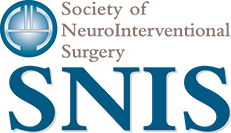By: Donald F. Frei, MD
In the next 40 seconds, someone in the United States will have a stroke; in the next four minutes, one stroke patient will die.
Nearly 800,000 people experience a stroke each year, and there are two types: hemorrhagic and ischemic. A hemorrhagic stroke occurs when a blood vessel ruptures or leaks, causing blood to spill into the surrounding areas of the brain. In an ischemic stroke, which accounts for 87 percent of all strokes, a blood clot denies oxygen to the brain. These conditions are a leading cause of death and long-term disability in the United States. Yet misconceptions about signs, symptoms and treatment still lead to incorrect diagnoses or delays in treatment. Here are five of the most persistent ones.
Myth 1: Stroke is something that happens to older people.
When we think about stroke, we assume it’s a condition that mostly affects senior citizens, someone recently retired or a person in their 70s or 80s. Kaiser Health Permanente physician Sal Iaquinta, MD, writes about how the “stereotypical” stroke patient medical students learn about is usually an elderly male with the telltale symptoms – a long history of smoking and cardiovascular disease. The risk of stroke does increase with age: Three-fourths of cases occur in people over the age of 65, and the risk of having a stroke more than doubles each decade after the age of 55.
But strokes are trending younger. In a study recently published in the Journal of the American Medical Association (JAMA), researchers found ischemic stroke hospitalization rates increased significantly for both men and women and for certain race/ethnic groups among 18-to-54-year-olds. And strokes have almost doubled for men 18 to 34 and 35 to 44 in the past two decades, with an increase of just over 41 percent among men 35 to 44 from 2003-2004 to 2011-2012.
Myth 2: Strokes can’t be prevented.
The sudden nature of a stroke may lead to the misconception that such attacks occur at random and can’t be prevented. But lifestyle conditions are key to both anticipating and avoiding strokes. Dr. Natalia Rost, associate professor of neurology at Harvard Medical School and associate director of the Acute Stroke Service at Massachusetts General Hospital, offers eight key points of stroke prevention: lower your blood pressure, lose weight; exercise more; drink alcohol in moderation; quit smoking; treat diabetes and, if necessary, treat atrial fibrillation or irregular heartbeats, whose warning signs include heart palpitations or shortness of breath.
New research reported in the JAMA study shows that the rising rates of stroke in younger people are likely the result of increases in high blood pressure, obesity and diabetes. The likelihood of having three or more risk factors doubled in men and women hospitalized for acute ischemic strokes, while the rates of stroke hospitalization due to hemorrhagic strokes remained stable. The risk factors point to preventable lifestyle choices that can be managed.
Myth 3: It is difficult to recognize the symptoms of a stroke.
Most of us fortunately may never experience a stroke but that may also lead us to believe we could not accurately diagnosis an attack. But the symptoms are not hard to detect. To increase the ease and speed with which someone can recognize a stroke, one method is summarized by the acronym F.A.S.T., created by the American Stroke Association. F.A.S.T. stands for: Face drooping, when someone’s smile is lopsided or uneven, or one side of their face droops or feels numb; Arm weakness, when a person raises both arms and one drifts downward, or feels weak or numb; Speech difficulty, when a person’s speech is slurred or difficult to understand and they are unable to repeat a simple sentence such as “The sky is blue”; and Time to call 911. Even if symptoms disappear, call for emergency transportation to a stroke center. Tell the emergency operator that a stroke is suspected and note when symptoms began.
In addition, first responders and emergency personnel can assess the severity of a stroke through one of several “stroke scales” which measure a patient’s responsiveness, including the ability to squeeze and release a hand, control eye movement, make facial expressions, feel a pin prick and more.
If you or a loved one experiences a combination of any of these symptoms, don’t wait for them to go away. Remember, time is brain: Nearly two million brain cells die every minute a stroke goes untreated. There is no singular “first” indicator, and thinking of strokes that way could lead patients to ignore other symptoms.
Myth 4: Most stroke survivors can’t live independently.
The National Stroke Association acknowledges the common belief that a stroke brings unavoidable and permanent disability. But landmark trials published in the New England Journal of Medicine in January 2015 and March 2015 have proven the efficacy of a specialized treatment for patients having an ischemic stroke caused by the emergent large vessel occlusion (clot), or ELVO, which is the most dangerous kind of stroke. ELVO accounts for approximately 10 percent of ischemic strokes. Neuroendovascular surgery—a remarkable procedure where the clot is “plucked” or “sucked” out of the brain–is highly effective in treating ELVO quickly, resulting in less disability and fewer deaths. Those who receive this treatment within a six-hour window have a much greater chance of walking away from severe stroke with few or no long-term consequences. A new study from the American Academy of Neurology found that severe stroke patients gain a week of healthy life for every minute saved in getting them the proper care. In my practice, I’ve seen dozens of patients who are paralyzed and unable to talk when they come in. Two days after neuroendovascular surgery, they are nearly back to normal and ready to leave the hospital.
Myth 5: Any local emergency room is the best place to bring a stroke victim, since time is crucial.
Our instinct in any medical crisis is to find help as close as possible. Emergency medical technicians can achieve high levels of detection and accurate diagnoses of stroke using stroke severity scales, but even patients correctly diagnosed by EMTs are most often triaged to the nearest hospital where they can wait for care while the brain dies. The longer the brain goes without oxygen, the higher likelihood of a disability.
In cases of traumatic injury, patients are assessed in the field, and the critically injured are transported to Level 1 trauma centers–facilities that are best-equipped to help them. Like trauma, stroke requires an assessment to determine severity in the field, and patients with severe stroke should be taken to a Level 1 stroke center. This is defined by the Society of NeuroInterventional Surgery as a facility with the ability to consistently and efficiently deliver neuroendovascular surgery 24 hours a day, 7 days a week, 365 days a year. Like Level 1 trauma centers, these facilities deal with stroke regularly and are equipped to treat it quickly and effectively. Since a neurointerventional care team is readily available to everyone in the United States, the direct transportation of patients to Level 1 stroke centers can ensure the best possible chance of survival and recovery.

